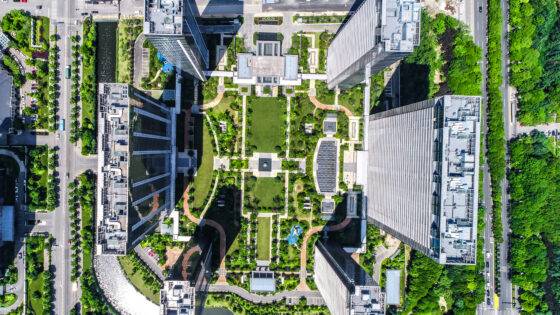Modular buildings are made out of pre-made, uniform components, or “modules,” which are produced in a production facility far from the construction site. Frames, walls, doors, ceilings, and windows are some examples of the common conventional modules produced in factories. The regular modular components are built using the same supplies and following the same rules as traditionally built structures. The manufactured modular parts are then transported to the site and put together in line with the design and requirements of the plan.
So, architects, before getting into a real workstation, should know the fair idea, even if they are from the best architecture colleges in Coimbatore. Let’s discuss the types of modular construction.
What is permanent modular construction?
Permanent modular construction (PMC) is used to build the facilities, which are put together at the same location for future use. PMC uses modern off-site manufacturing processes to prefabricate the building’s parts.
- These structures are constructed on durable concrete foundations and, like other types of real estate, are not meant to be moved.
- These structures can be standalone or attached to an existing one.
- Steel, wood, and concrete are long-lasting materials used in construction.
- Due to its adaptable customization choices and great architectural style, customers can choose to include lobbies, lifts and stairwells.
Temporary modular construction:
- Modular rooms with doors for entry and exit on opposing walls are called mantraps, and they are constructed using prefabricated components. They act as a safety barrier to keep trespassers out of the building’s restricted areas.
- Prefabricated garages are modular buildings used to hold cars and protect them from the elements and theft. They can feature a number of chambers under one roof to house a number of cars. They typically have automatic garage doors with security features, which require the installation of security features.
- Office workers can operate mobile offices equipped with mobility characteristics that give them the impression that they are in an office rather than on the job. The utilisation of mobile computer systems, internet connectivity, IT services, telephone services, and mailing services allows the business to maintain connections with clients and other stakeholders even in the absence of a physical location.
- Prefabricated buildings are modular constructions whose components, including the roof, walls, ceilings, and furniture, are constructed off-site and in close accordance with the needs of the customer.
Prefabricated buildings are pieces that are brought to the intended location and then assembled entirely or partially.
Manufacturers of prefabricated buildings enable greater versatility. Modular buildings, on the other hand, can be sold as commodities because they are composed of regular, consistent components.
The customer is responsible for the installation and enhancement of certain features.
These types of prefabricated and modular buildings need architects who can design for the given spaces. So if you hold a degree from one of the best architecture colleges in Coimbatore, you can have the opportunity to work on and develop these buildings.
What are the benefits of modular and prefabricated construction?
- Time Efficiency in prefabricated and modular construction enables simultaneous on- and off-site work. Modules are produced in a factory while the foundation is being prepared on-site. When compared to conventional techniques, this parallel procedure considerably shortens the construction time.
- Production that is factory-controlled offers better cost control, less material waste, and simplified logistics. In the manufacturing of modules, repetition and standardisation can result in economies of scale and lower overall construction costs.
- Strict quality control procedures are made possible by the controlled factory environment. Construction modules are produced in accordance with exacting specifications, reducing mistakes and raising the overall standard of the finished project.
- Prefabricated and modular building techniques are very adaptable and can be used for a variety of architectural styles and project specifications. Designers can incorporate a variety of materials, finishes, and systems into modules to satisfy particular demands.
- Buildings can be easily expanded or modified thanks to modular construction. It is a flexible solution for both temporary and permanent structures since additional modules can be added or removed based on the shifting needs of the occupants.
- Prefabricated modules may be made to be simply transported and put together at various sites. This mobility feature is very helpful for projects that call for relocation, temporary construction, or shelter for those affected by disasters.
- Reduced Waste: Because resources are optimised and recycled on-site, factory-controlled production produces less building waste. Additionally, materials left over from one project can be repurposed in subsequent projects, lowering the amount of trash produced overall.
- Energy-efficient designs are prioritised in contemporary modular buildings. Better insulation, the incorporation of renewable energy sources, and the use of sustainable technology are all made possible by the controlled production process.
- At the end of their useful lives, modular and prefabricated buildings’ components can be removed and reused or recycled. This strategy lessens the environmental impact of construction while promoting the idea of a circular economy.
These points may give you a fair idea that architecture is not only for the design of large buildings or government projects; you also need to provide the creative mind in designing and developing procedures for the construction. So, you can gain better experience once you complete your architecture course at one of the leading architecture colleges in South India.






